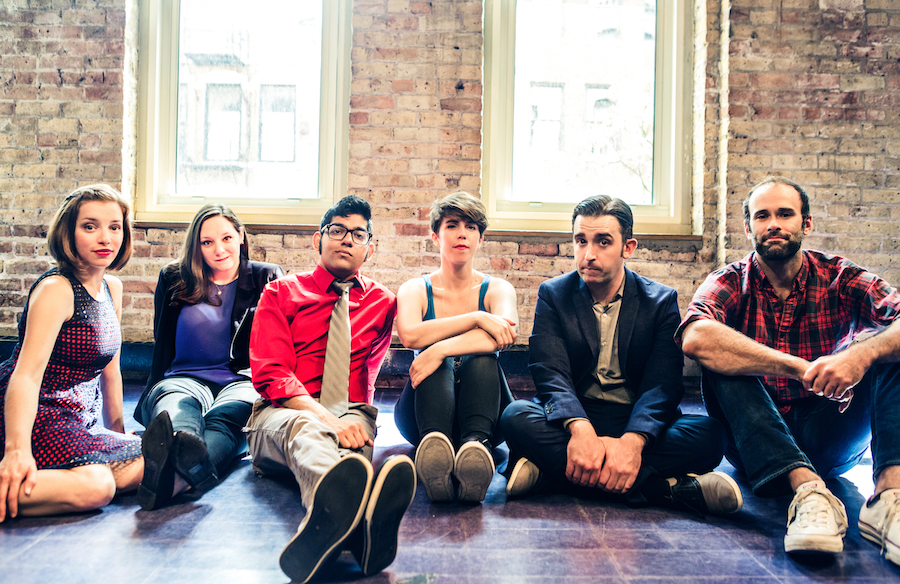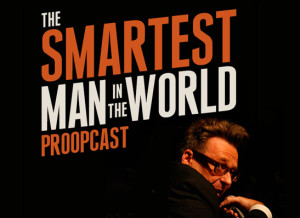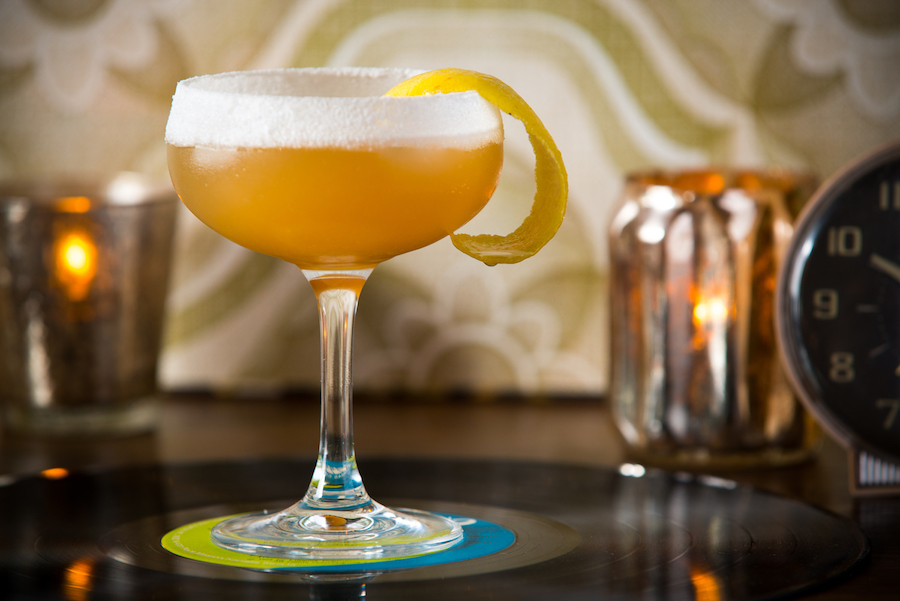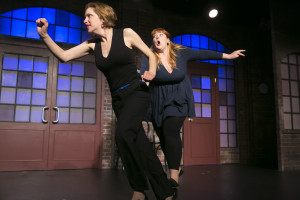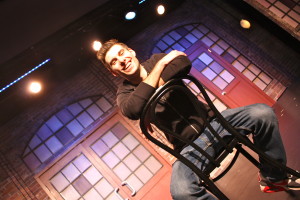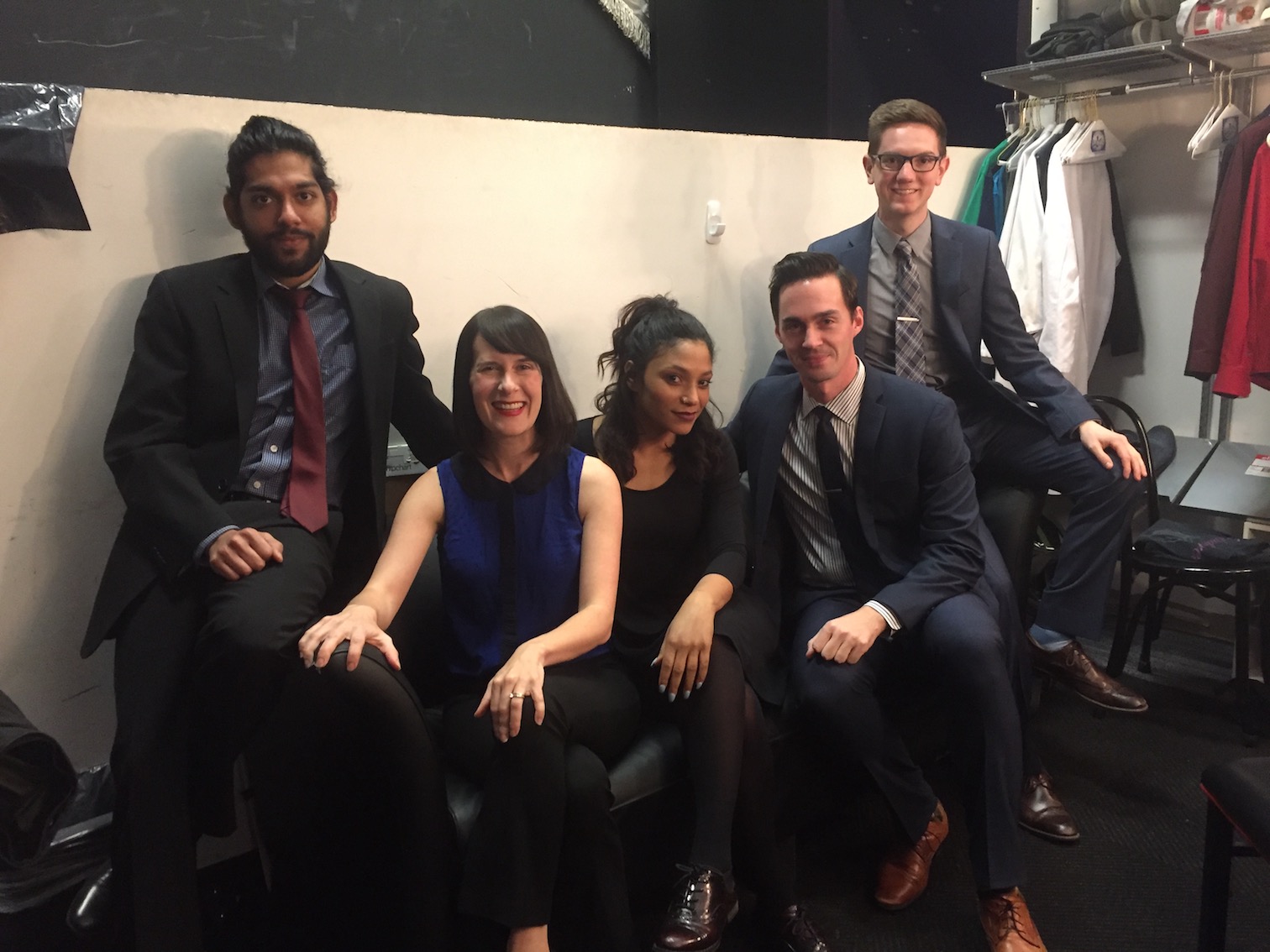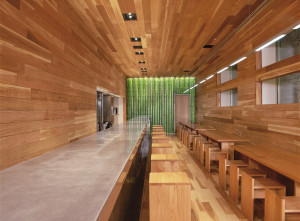We ask, they answer: Q&A with Second City’s Timothy Edward Mason
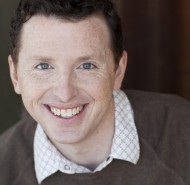
Second City star discusses new show, finding comedy amidst tragedy and making racial differences fun
By Trent Modglin
The Second City’s 99th mainstage revue, South Side of Heaven, opened April 10 to rave reviews that are calling the performance “groundbreaking, intelligent, knee-slappingly hilarious and richly textured.”
Those critics are hardly blowing smoke, as the show is easily one of the theater’s best in recent memory. South Side of Heaven, behind a brave and versatile cast, keeps things fast-paced and current enough for all of us to appreciate, all while taking monumental risks, providing plenty of shock value and hitting us with truthful moments that are, at equal times, refreshingly dark and incredibly funny.
 And at the center of it all is Second City veteran Timothy Edward Mason, who tackles roles like a creepy TSA agent allowed to improvise with the crowd, a Cubs fan facing a cultural divide with South Siders (the best scene in the show), a cheesy furniture salesmen and a horse at the mercy of a maniacal carriage driver. Yes, you read that all correctly. And that merely scratches the surface of the depth of character that Mason, and his counterparts, go in this exciting, edgy and, at times, innovative show.
And at the center of it all is Second City veteran Timothy Edward Mason, who tackles roles like a creepy TSA agent allowed to improvise with the crowd, a Cubs fan facing a cultural divide with South Siders (the best scene in the show), a cheesy furniture salesmen and a horse at the mercy of a maniacal carriage driver. Yes, you read that all correctly. And that merely scratches the surface of the depth of character that Mason, and his counterparts, go in this exciting, edgy and, at times, innovative show.
The Real Chicago sat down with Mason recently to discuss calling the Cubs the N-word of baseball, fostering comedy out of tragedy and the creative freedom necessary to take chances in South Side of Heaven — all, somehow, without giving away too much of the show’s surprises.
Q: How would you describe this show to the person who’s never had the Second City experience?
A: I would say, compared to other Second City shows, it deals with weightier topics. I think this one is a little deeper, a little darker. Get ready to go for a ride because I feel like once this show gets going, it doesn’t stop, and it doesn’t let you catch your breath for a while.
Q: You guys seem to skirt the edges and really get away with a lot in your shows, especially this one… much more than even a lot of stand-up comedians. I keep thinking back to the skit about calling the Cubs “the N-word of baseball” and how funny, almost groundbreaking that was. What is the writing process like for a show like this?
A: This one was way more collaborative. Edgar (Blackmon) came in one day and said he wanted to call the Cubs the N-word of baseball. That was just his take on it. And that was just the start. The scene doesn’t stop there. Then it gets into, like, South Side-North Side, racial stuff.
Q: And making fun of Ozzie Guillen’s English.
A: Exactly, Ozzie Guillen. And then the scene right after it, we have the N-word written out and hand it to someone in the audience. Each one of those is a step that somebody added. Holly (Laurent), who’s not even in the scene, she’s the one who brought in the idea that she would find the N-word written out and hand it to someone in the front row. So as far as skirting issues, we just kept pushing it to see as far as we could go. Tim (Robinson) and I do a scene as furniture salesmen guys, and we’re like, “This has been done.” You always see these fake commercials with lots of props, so we were thinking we had to take it further. So then we’re like, “We’ve gotta kill ‘em.” And then we were like, “Let’s shoot ‘em.” And then Billy (director) (Bungeroth) is like, “Well, if he’s going to die, he’s gotta smear blood all over the place.” We just kept pushing each other. And we never found the boundary that was too far, really.
Q: I would assume that, as a sketch comedian, never finding that boundary is key for you guys. You’ve got to feel a little spoiled being able to have the freedom to create the kind of comedy you do there.
A: Absolutely. And that’s what you hear from everybody who’s gone before us. They say that the time at Second City is the freest you’ll ever be. We really pushed ourselves this time. I really wanted to try to do stuff that I haven’t done before and I haven’t seen done before. So there are no real scenes about a relationship between husband and wife and no office scenes. We really tried to find those different places and different things to talk about.
Q: With all those creative people, I can see someone coming in with an idea and a bubble chart like we used to use in middle school, and just saying, “Where can we take this and be funnier and more outlandish?”
A: Yeah, and in the first part of the writing process this year, all these crazy things happened. Mary Scruggs, who was the head of the writing (and education) program, she passed away and some of us were close to her. And then Joyce (Sloan), who was like the mom of Second City, passed away. And then there was the blizzard and some other things. So there’s all this emotion and stuff going on. And as far as the producers go, they didn’t even have a chance to look at what we were doing. By the time they finally looked up and saw what we were doing, we were murdering horses and using the N-word. We had already gone too far before they even looked in. But they looked at it and loved it. We really got away with a lot of stuff this time.
Q: One of the things I always take away from Second City, and this show in particular, is how, even though some skits are taken to another level, they are usually so relatable to so many people. From politics to race relations to relationships and current events.
A: Yes. And just the way this show flows, I think if someone from the suburbs walked in during the second act, without having been slowly warmed up to it, I think they’d say, “What the hell is this?” We get the crowd so on our side that by the time it gets to me at the end of the show exposing people in the front row, nobody’s safe. Some of (the improvisation) I get to do in the TSA skit is fun… Every night I have to basically do my homework.
Q: It seems like this cast really enjoys working together. How much of the rapport within the cast is apparent right off the bat and how much of it is built up over time through writing and rehearsals?
A: I’ve had amazing casts in the past and been so in love with all of my other shows, but for some reason, the six of us came together so quickly and so easily and without ego that nobody ever said no to any idea for this entire show. All across, the six of us respect each other equally, and I’m just completely amazed by the other five people I’m working with. And a lot of us hadn’t worked together, ever. Edgar and I barely knew each other, just from passing. And after about a week, I was like, “Holy crap, we have kids the same age and so much in common.” Edgar and Holly both come from backgrounds where their parents are preachers. And my family’s real religious, so we’ve got a lot of these different ties to each other. It’s been a magical experience to work with these guys.
Q: Do you have a favorite part of the show?
A: Usually in a show, there’s a part that I just despise. And I divide the show into two parts, before that scene and after that scene, because I hate it so much. This show, I love everything. Currently, my favorite part is the horse and the way that scene ends (which we’ll keep secret). And I get to have a beer halfway through the scene. … I can’t tell you how much fun that scene is.
Q: And you get to make a mess in the process.
A: In the show, that’s all we do. We spill blood, water, powder, food, apples, Chipotle. That whole stage is a mess. It’s just crazy. I probably have 10 times as many props for this show as I’ve had for any other. It’s a very visual show,  thanks to our director. … I start a scene where I’m handcuffed and gagged, and he just wants to make that image work first, and then we can go off that. Nothing is normal in that show. If you ever think you know how a scene is going, we try to flip it on you.
thanks to our director. … I start a scene where I’m handcuffed and gagged, and he just wants to make that image work first, and then we can go off that. Nothing is normal in that show. If you ever think you know how a scene is going, we try to flip it on you.
Q: Kind of a broad question to finish things off, but what is your favorite part about working for Second City?
A: A lot of it is that creative freedom. It’s funny you ask this because a few weeks ago, I saw this old documentary they did like 15 years ago, about the process of Tina Fey and Kevin Dorff doing (the 1997 Second City show) Paradigm Lost, and I was like, “I can’t believe I went through the same thing they did.” So one of my favorite things is that creative freedom and the history of it here. Knowing these six people are going to go into a room and create something completely different than these other six people. It’s kind of cool to see what these six of us came up with. And I think because we went through so much, with the deaths (of two people at Second City) and so many of us coming from a spiritual background, it’s really neat that we came up with a show where we’re dealing with deeper things than other shows. … I love the ability to collaborate and do whatever we want to do, and 300 tourists are going to come each night no matter what. It’s like being the Sears Tower for a year.

